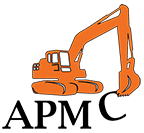Erosion control solutions are methods and techniques used to prevent or mitigate the erosion of soil and sediment in various environments, including construction sites, agricultural fields, coastal areas, and natural landscapes.
When it comes to professional erosion control, Cary residents should know that professionals have many different ways or methods to tackle erosion and protect your home or property.
Erosion can result from factors such as rainfall, wind, human activity, or natural processes, and it can lead to soil degradation, water pollution, and damage to infrastructure. Here are some erosion control solutions and techniques:
- Vegetative Erosion Control:
- Grass and Ground Cover Planting: Planting grasses, shrubs, and ground cover plants with strong root systems can help stabilize soil and prevent erosion.
- Riparian Buffer Zones: Establishing buffer zones of native vegetation along water bodies can reduce the impact of erosion and filter out pollutants.
- Structural Erosion Control:
- Silt Fences: Silt fences are temporary barriers made of geo-textile fabric that intercept and slow the flow of sediment-laden water, allowing sediment to settle out.
- Check Dams: Check dams are small, temporary dams made of rocks or logs placed across a drainage path to slow water flow and reduce erosion.
- Retaining Walls: In areas with severe erosion, retaining walls can be built to stabilize slopes and prevent soil movement.
- Erosion Control Blankets and Matting:
- Erosion Control Blankets: These are biodegradable or synthetic blankets that can be placed over exposed soil to protect it from erosion and promote vegetation growth.
- Coir Matting: Coir matting is made from coconut fiber and is often used on slopes and banks to control erosion and establish vegetation.
- Hydro-seeding: Hydro-seeding involves spraying a mixture of grass seed, mulch, and a tackier (a substance that helps the mixture adhere to the soil) onto bare soil. It promotes rapid vegetation growth and erosion control.
- Geo-textiles and Erosion Control Fabrics: Geo-textiles are permeable fabrics that can be used to stabilize soil and prevent erosion in construction and landscaping applications.
- Stormwater Management: Properly designed stormwater management systems, such as detention basins and swales, can help control the flow of stormwater and reduce erosion.
- Soil Stabilization: Adding stabilizers like polymers or soil binders can improve soil cohesion and reduce its susceptibility to erosion.
- Natural Erosion Control Methods:
- Terracing: Terracing involves creating level steps or platforms on slopes to reduce water runoff and erosion.
- Bioengineering: Using living plants and trees to stabilize soil, such as willow stakes or live fascines.
- Erosion Control Planning and Regulations: Complying with local regulations and guidelines for erosion control is crucial for any construction or development project.
- Education and Best Practices: Training and educating workers and landowners on erosion control best practices can go a long way in preventing erosion.
The choice of erosion control solution depends on factors such as the specific erosion problem, site conditions, budget, and environmental considerations. Effective erosion control often involves a combination of these techniques to address various aspects of the issue and provide long-term stability to the affected area while minimizing the environmental impact.
*Disclaimer: The views expressed here are those of the authors and do not necessarily represent or reflect the views of American Property Maintenance Company*

